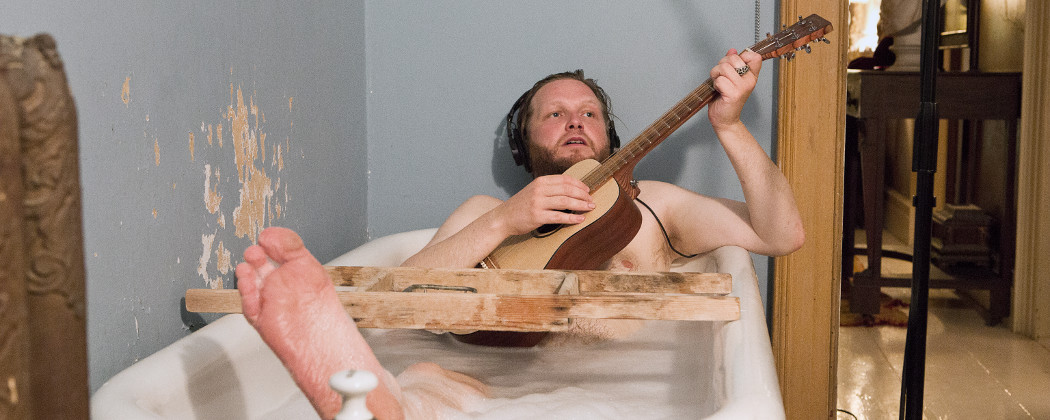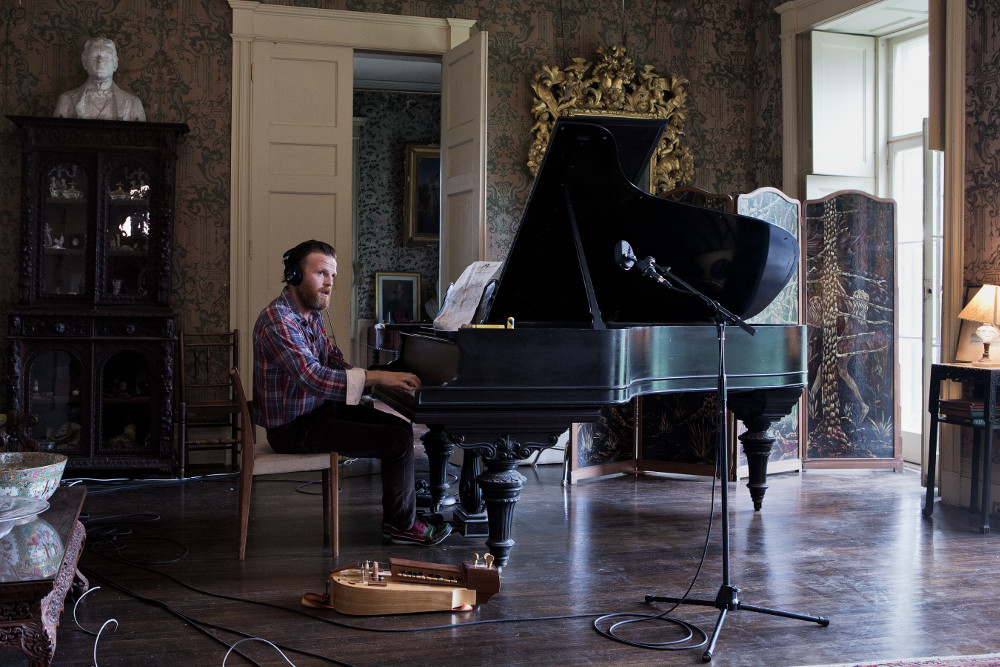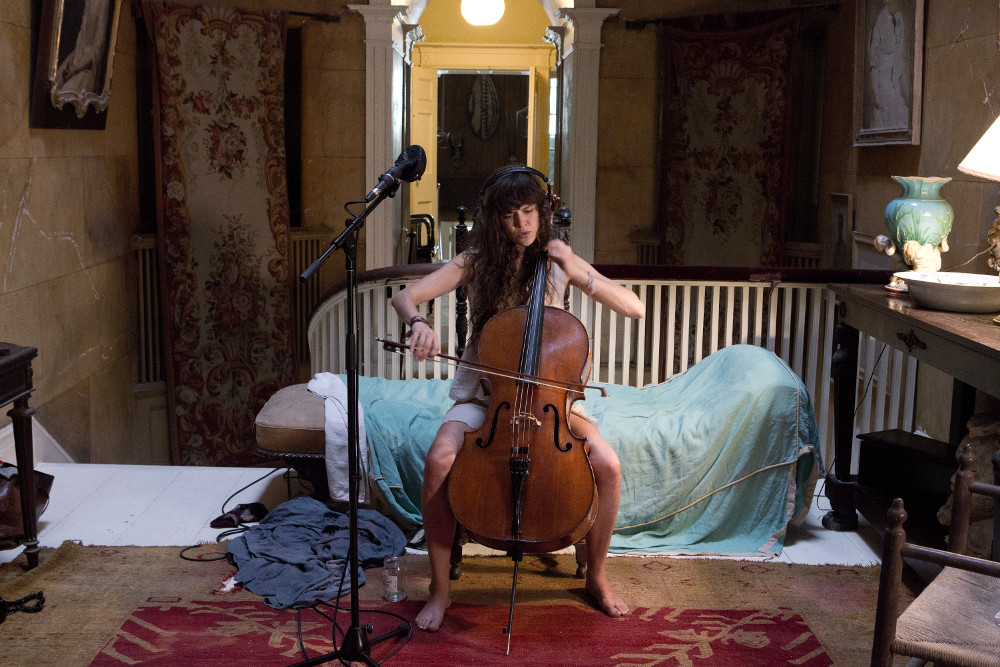Advertisement
Ragnar Kjartansson's 'The Visitors' Rewards Patience

Sixty-four minutes is a long time for even the most patient museum-goer. Being asked to stand in a spacious, but empty room spare massive screens hung on the walls, and listen to a repetitive song drives many out of the room at the Institute of Contemporary Art and on to other exhibits within a few minutes.
For those who are willing to stick it out, as the musicians move lazily about their screens playing their respective instruments effortlessly, Ragnar Kjartansson’s exhibit, “The Visitors,” a multi-screen video installation at the ICA, overwhelms the senses — and emotions — like no other.

The visuals on the screen are commonplace, yet interesting, in the way vintage photographs excite the imagination. The music is repetitive, but never boring, and even at times surprising. The sense of community is reassuring, created discreetly by being ushered around the room by an artist who is not actually there in person, though his recorded persona appears in the exhibit.
In short, it’s like a weekend with the family, complete with quiet, tender moments, loud obnoxious ones, feelings of separation and feelings of community, bursts of unexpected joy and, of course, the awkward naked-towel drop.
To start things off, white-skinned, red-bearded Kjartansson, an Icelandic performance artist, greets his audience as part of his own installation in a larger-than-life video screen hung on the first wall. Lying in a filled pedestal bathtub, he strums on an acoustic guitar to the melody in his headphones — a song titled “Feminine Ways” that uses some of the words of a poem by his ex-partner Ásdís Sif Gunnarsdóttir: “Once again, I fall into my feminine ways.”
Within the room, the musicians all get a stage — a framed video recording of their solo performances in different spaces of an old mansion. A lanky man plays along on the piano in a parlor-type room and on the landing by the stairs, a young woman embraces a cello with her knees — sometimes bobbing her head more than touching the strings.

Eventually, Kjartansson lets you hear his deep, rumbling voice as he shuts his eyes. A loud boom comes from a cannon on the screen in the middle of the exhibit and the dispersed audience turns their heads in unison for the first time. Next to the canon, a group relaxes on the back porch of a beautiful, but run-down white mansion. There’s almost the sense of a lazy, Southern afternoon, but the installation is actually shot at Rokeby House in upstate New York.
Other musicians play along to the same melancholy melody until all of a sudden they’re caught up in a raucous whirlwind. Easing into a happier moment, their voices align in a lullaby, repeating until the audience is swaying with them.
Beginning the work with the musicians on different screens, he spreads his audience throughout the room, letting them bump into each other casually and walk on by.
The musicians give up on the separation one at a time as if they heard a cue through their headphones. A man joins another guy by the piano and they light up cigars. Kjartansson gets out of the bathtub. They pop open a bottle of champagne together and whatever hints of sadness left are erased. They smile, drink, smoke, the towel drops for a second, and they head outside as a group.
By now, the audience is a lot closer together physically, and perhaps emotionally. They had shuffled toward each other as the musicians greeted each other on screen. They shared a sigh and a laugh together and looked for each other’s lead on where to look next.
The chaos of heads turned in every which way to get a glimpse of the different screens are now all facing the same direction. As if magnetically pulled, everyone clumps together watching the middle screen where all of the musicians came together in the backyard.
The group of friends walks off together into the golden hour down the hills off the back yard — in a less obvious rendition of the last scene of a romantic comedy — as the audience does the same. In a bit of a daze, the audience leaves the exhibit in a quiet and fluid motion.
As much as the artist seems to try for an exhibit without a story, the movement of the characters becomes the story. The shared experience tells them more than they would have learned from a storyline.
Forcing the audience together as the musicians move into the same screen, the installation proves to be as much about the audience as the subject matter -- using the ICA’s "visitors" to make its point loud and clear.
“The Visitors” is on display at the ICA until Nov. 2.